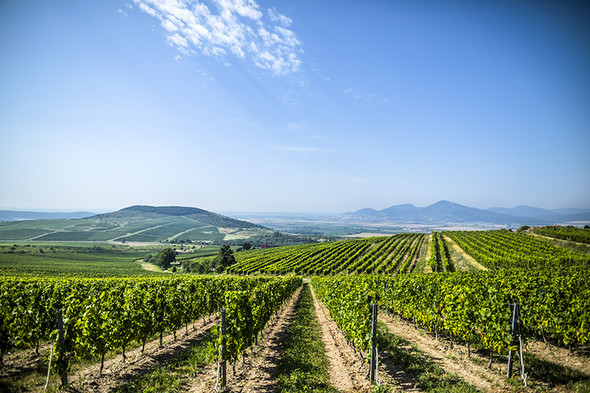If you talk about Tokaj, Hungary is what comes to everyone’s mind. Yet, more and more often we hear (thanks to us too) about that other Tokaj, the one in Slovakia. Is there any relationship between the two? Yes, there is? So, how is that you have not heard about the Slovak version yet? To answer this question, I need to start the story a little further back.
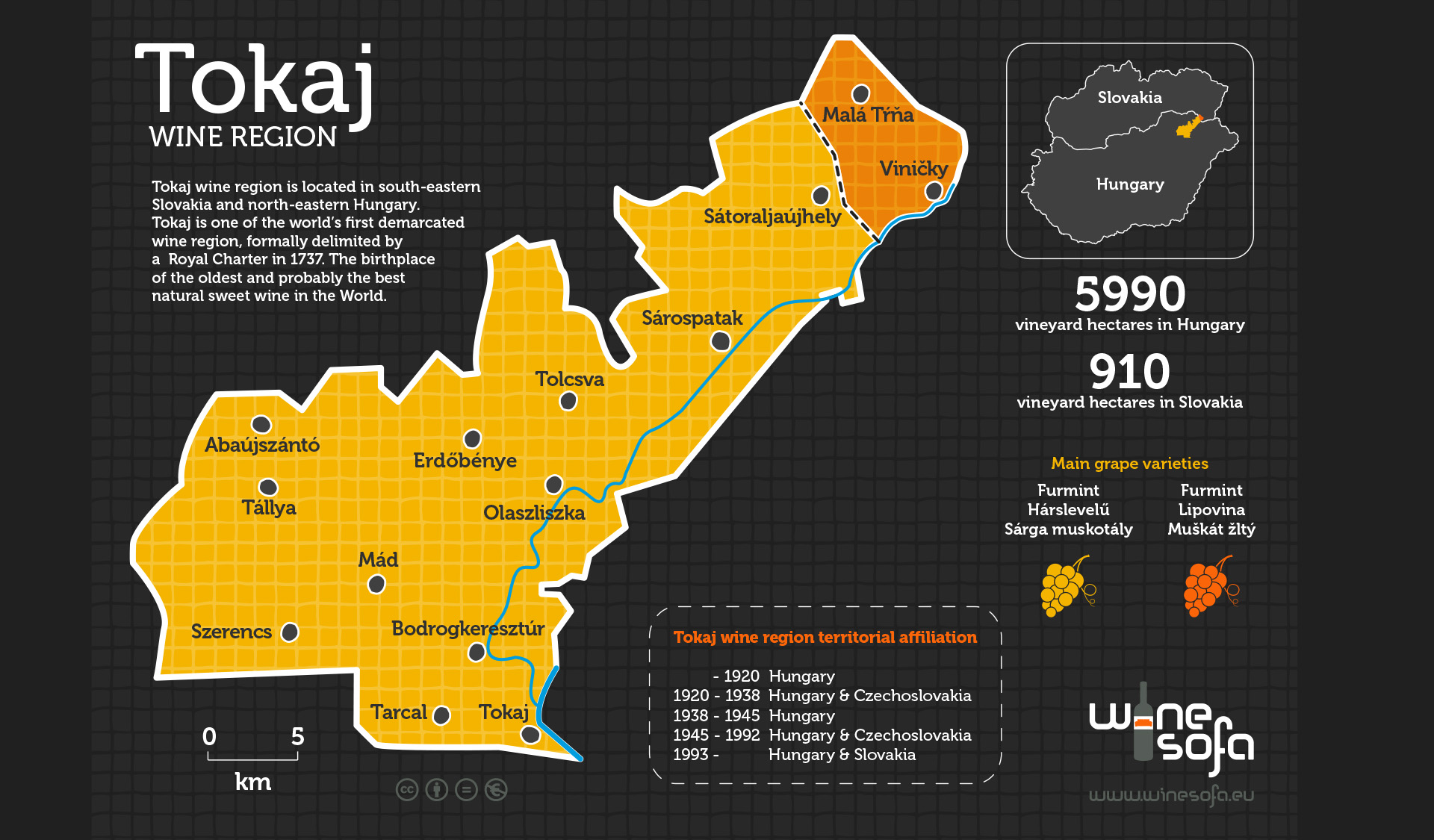
The first map about the two wine regions together. If you are interested in, click here to download for free!
I’ve already written about this a few times on WineSofa too, but it won’t hurt to repeat it. The Tokaj wine region was the most important wine region in the historic Hungarian kingdom, starting from when the Ottoman armies pouring in from the south destroyed the Szerémség (Syrmia) wine region, which is nowadays shared between Serbia and Croatia under the name Fruška Gora. At that time (we’re talking about the 1400s and 1500s), a wine’s sugar content was most certainly its greatest value. It was difficult to get hold of this precious sweetness (unlike nowadays, when we have cheap coca cola and fruit gums), so not only fruit and honey were appreciated, but also naturally sweet wines, which were selected, and legends were woven around them. Tokaj was at the forefront here, centuries ahead of the German TBA and Sauternes wines!
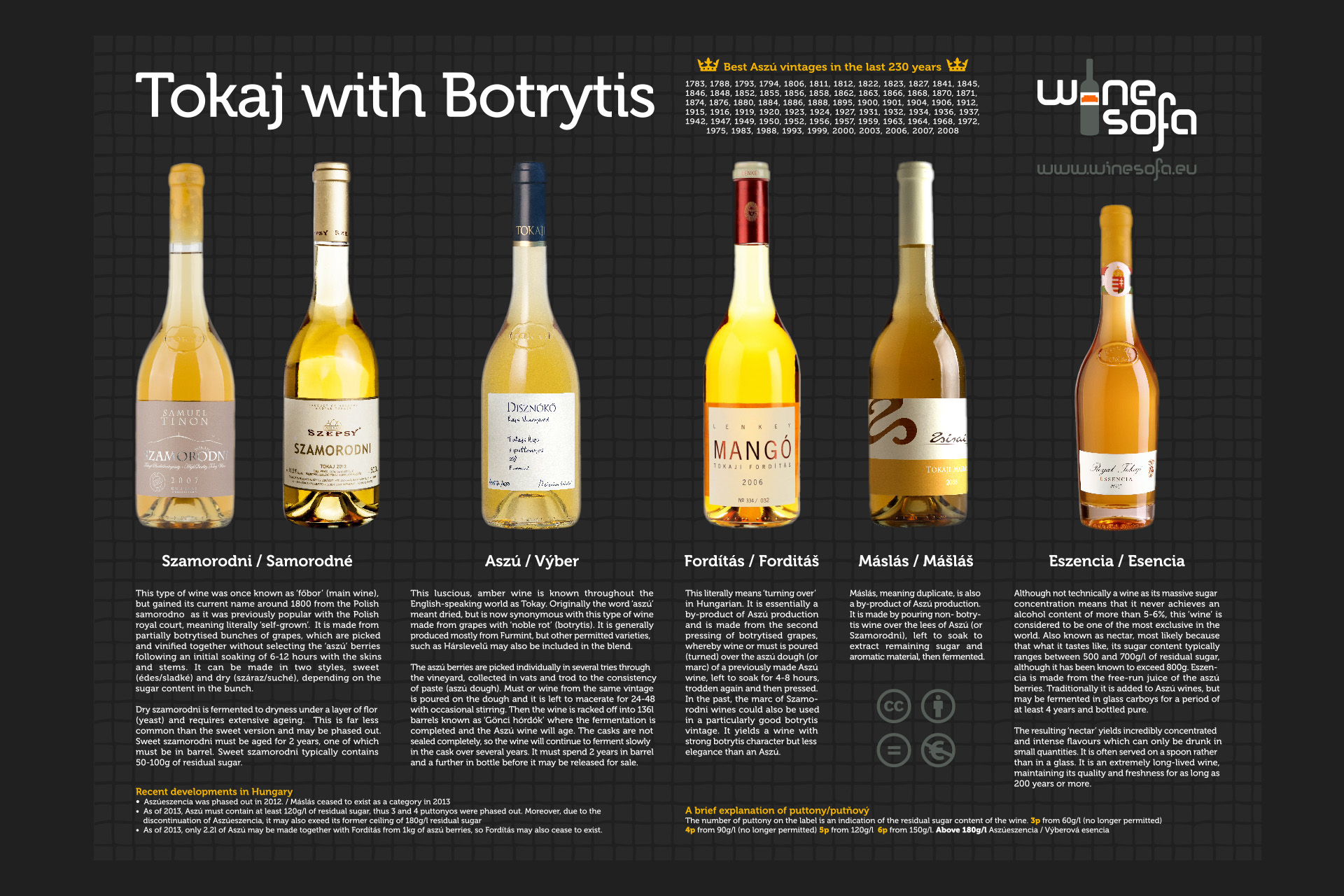
Tokaj with botrytis infoposter, click here to download for free.
Now let’s jump ahead a bit, right to the end of the peace treaty at the end of the First World War, when the Austro-Hungarian Monarchy broke up, making the territorial integrity of the Hungarian kingdom a thing of the past. Czechoslovakia came into existence and this new country ended up with two settlements from the Tokaj wine region as well as part of a third and an area of around 178 hectares which, according to Hungarian wine law of the time, was suitable for producing Tokaj wine. This area was returned to Hungary during the Second World War, was then again part of Czechoslovakia, and finally from 1993 was one of independent Slovakia’s wine regions. The production area had already been expanded during the Czechoslovakian era, so today’s seven settlements can produce Tokaj wine in Slovakia from around 1000 hectares, under the Vinohradnícka oblasť Tokaj (wine region Tokaj) name.
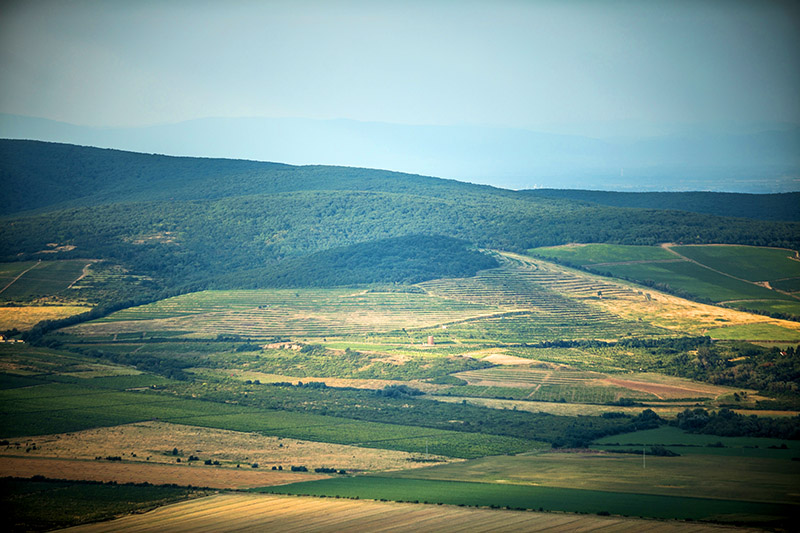
Vineyards in Malá Tŕňa, from the top of the hill in Sátoraljaújhely (Hungary) by @PixelTaster
So, is this now one wine region, or two?
On paper, it’s two. The Hungarian and the Slovakian Tokaj. In theory, there is no crossover between the two wine regions; they cannot buy grapes or wine from each other and they cannot market any produce from the neighbouring country. What’s more, the relationship with the other side of the border is somewhat frosty. At least officially, on paper. In practice, however, it looks a little different. WineSofa was the first in the world to deal with the fact that the two Tokajs have more than 600 years of common history, something that cannot be split in two by boundaries drawn for political reasons. The region is one region, even if they do speak two languages, and its common denominator is wine, what’s more, quality wine! It seems that we have achieved something here too, despite the lack of tools. You could taste one Slovak wine in 2015 at the largest tasting for the Furmint variety in Budapest (Furmint February) whereas in 2016 you could taste three. Moreover, numerous Hungarian wineries participated in the Furmint Fórum tasting in Kosice in 2016 and 2017.
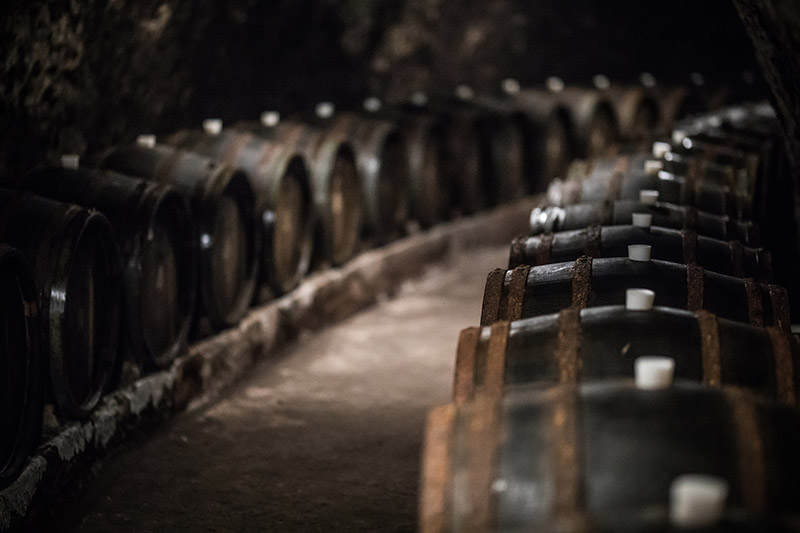
Somewhere in the cellar of the Tokaj&CO by @PixelTaster
OK, so what are we talking about now?
Well, the Slovak Tokaj wine region, locally known as Vinohradnícka oblasť Tokaj, with the same three main varieties of grapes dominating (Furmint, Lipovina, Muškát žltý) as on the Hungarian side (Furmint, Hárslevelű, Sárgamuskotály), produces the same dry, but mainly sweet wines, the latter from botrytised grapes. Most wines have the same or very similar names too (samorodné-szamorodni, forditáš-forditás, mášláš-máslás), only Tokaj Aszú has a different name here, in this case Tokajský výber. Now that we know this, we should also note that, in contrast to Hungarian Tokaj Aszú, Slovakian Tokajský výber must include all three main varieties in predetermined proportions and now we know almost everything. It’s also important to mention that the recent Hungarian changes do not affect Slovak Tokaj, so three and four putňový výbers can still be made there.
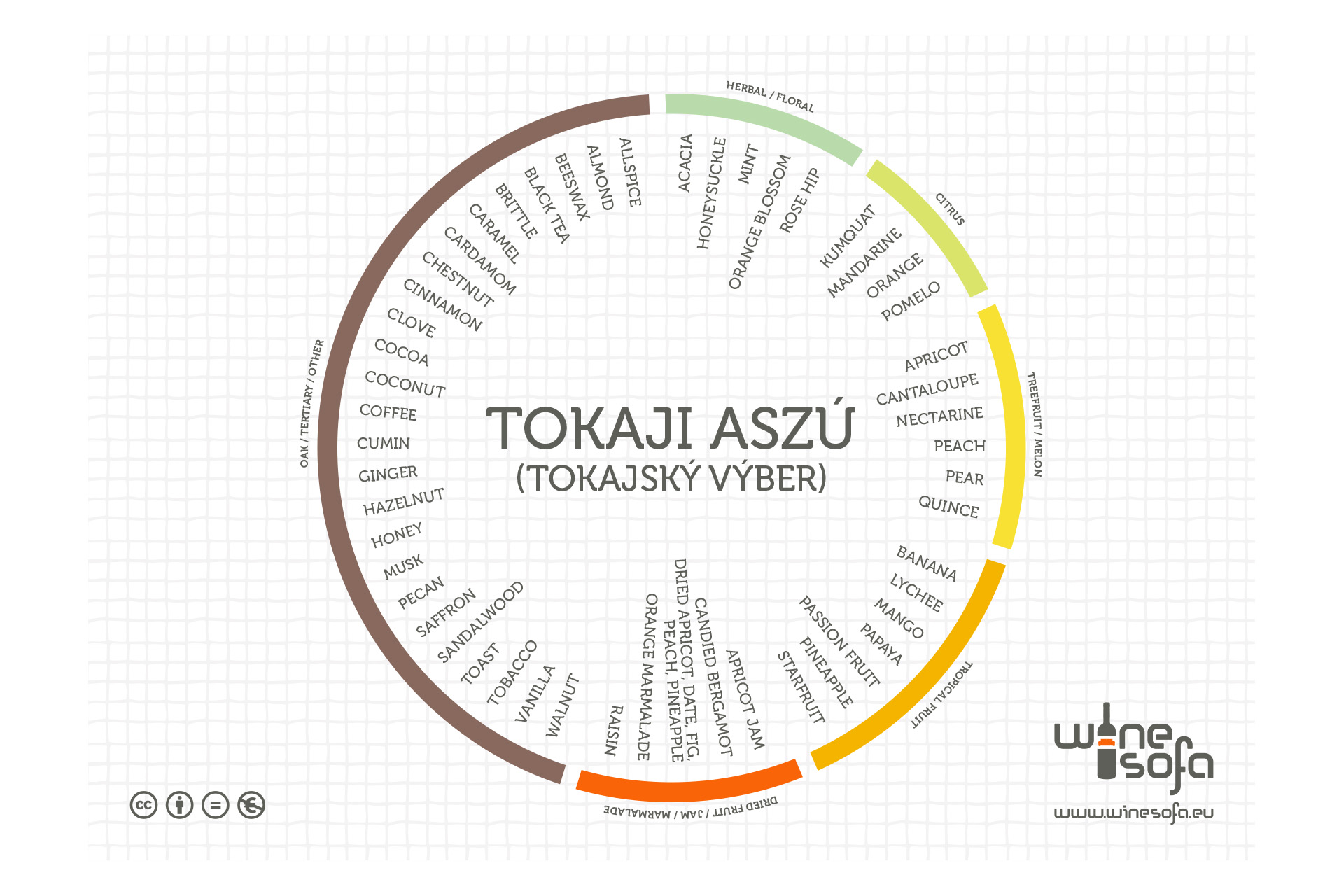
Tokajský výber aromaprofile, click here to download for free!
What makes Slovak Tokaj different apart from this? Well, there are still a few small but important differences. The first is if we look at the whole original wine region (i.e. that of the 1920s), then only Slovak Tokaj has an area with sandstone bedrock. Tokaj is well-known for its highly diverse geology, yet largely volcanic countryside with lots of rhyolitic and andesitic tuff with the exception of the Tokaj Hill, which is covered with a thick layer of loess. However, present-day Slovak Tokaj is not located on the slopes of the Zemplén Hills, rather on the slopes of the so-called Zemplén Island Hills, where as well as the sandstone and some limestone, there are of course also some volcanic rocks. Why is this important? On the Hungarian side, dry vineyard-selected whites have become all the rage in the past few decades, whereas in the coming decades it will be the vineyard-selected Aszús. If Slovak Tokaj wants to follow suit (and there are some signs of this with Chateau Vecsey’s Lada vineyard), then it will be able to showcase new, exciting angles which the Hungarian side can’t.

View from the Lada vineyard by @PixelTaster
The northern parts
Let’s take a closer look at Slovak Tokaj. It’s located in an area distinct from the Zemplén Hills (which is also in its name, ‘Island Hills’), as are the settlements of Legyesbénye, Monok, Bekecs, Ond, Golop and Szerencs at the other end of the Hungarian Tokaj. The northernmost vineyards where wine can be marketed under the Tokaj name are found here in Slovak Tokaj. Almost next to each other are two neighbouring settlements, Čerhov and Veľká Tŕňa, separated by the legendary Čierna hora (Black Hill), some of whose vineyards (but not all!) are now considered as Tokaj territory. Marián Takáč also cultivates vines in these parts; his natural wines and ex-firefighter character also gladden people’s hearts. Yet, the Čierna hora is not the northernmost area, but rather the Berecky vineyard which lies just north of Veľká Tŕňa, from which Matúš Vdovjak produces his wines.
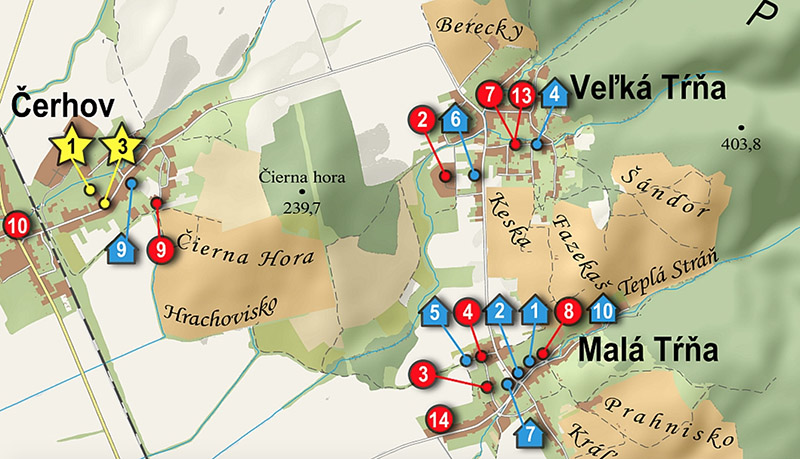
Map detail about the north part of the region by Igor Vizner. If you like it, click here for more info.
By the way, regarding Veľká Tŕňa, it’s my own personal opinion, but for me, the structure, atmosphere and buildings of Veľká Tŕňa make it the most Tokaj village in Slovakia. Perhaps this is strange to hear, coming from a Hungarian, but with its noble mansion (which unfortunately is in very bad repair, but seems to me could be a real gem of the wine region, whether in the guise of a boutique hotel or a beautifully renovated community tasting room), its churches, its winding streets and old houses on the hillside, as well as its row of wine cellars and vineyards, preserves something of the old atmosphere of Tokaj, even though, historically, it was not part of the Tokaj wine region!
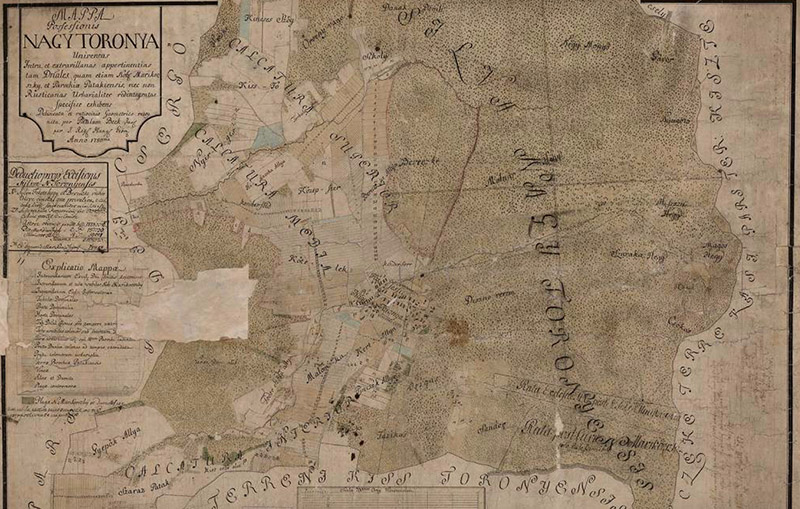
Veľká Tŕňa in 1780
That, of course, does not mean that it does not belong there today either (as it is part of the Vinohradnícka oblasť Tokaj), nor does it mean that there were no grapes here in the past, since the Kaszner Classification List stated the following in 1822: “clivos vini feraces” or good location for wine production. At that time, Veľká Tŕňa, and most of today’s Slovak Tokaj settlements (except for Malá Tŕňa and Slovenské Nové Mesto, which were not yet individual settlements, rather part of Sátoraljaújhely) belonged to the Upper Zemplén wine region. (Whereas some of the current Hungarian Tokaj settlements, e.g. Bekecs, Legyesbénye and Szerencs belonged to the Miskolc wine region.)
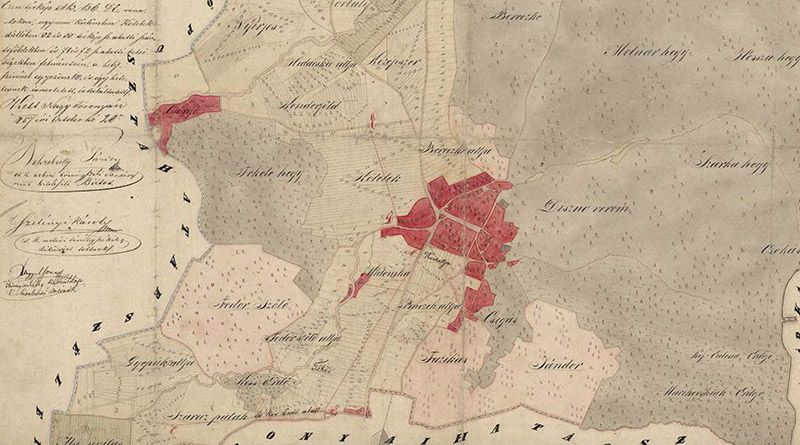
Veľká Tŕňa in 1856
Turning south
If we head south from Veľká Tŕňa, the road leads all the way through the vineyards to Malá Tŕňa, Slovak Tokaj’s oldest Tokaj village. Malá Tŕňa (Kistoronya in Hungarian) was already considered a Tokaj settlement in the 1500s, meaning that wine originating from here already found its way as Tokaj wine to the cellars of the era’s most important buyers, the Polish nobility. When the Hungarian king made the Tokaj wine region the perhaps first demarcated wine region in the world in 1737, Malá Tŕňa was amongst the listed settlements, unlike Szerencs!
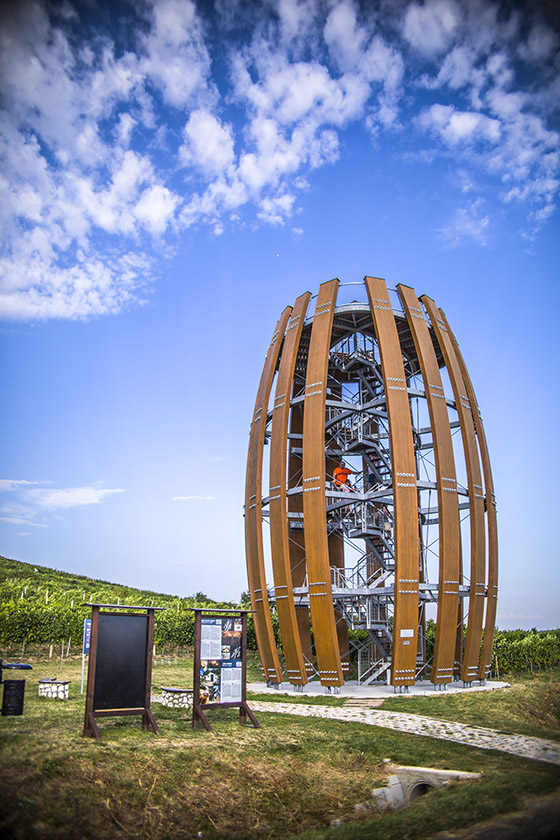
Viewpoint in the vineyard by @PixelTaster
Its vines were also mentioned as early as 1221 and 1258, whereas we know that its famous Šimonov vrch (St Simon Hill) vineyard was named after the patron saint of the local parish, Saint Simon the Apostle. We also know that it was originally the village parish’s vineyard and was later owned by such noble families as the Bocskai or Perényi. The latter were early converts to the Calvinist faith, which is when the name of the vineyard changed from St Simon to just Simon Hill.
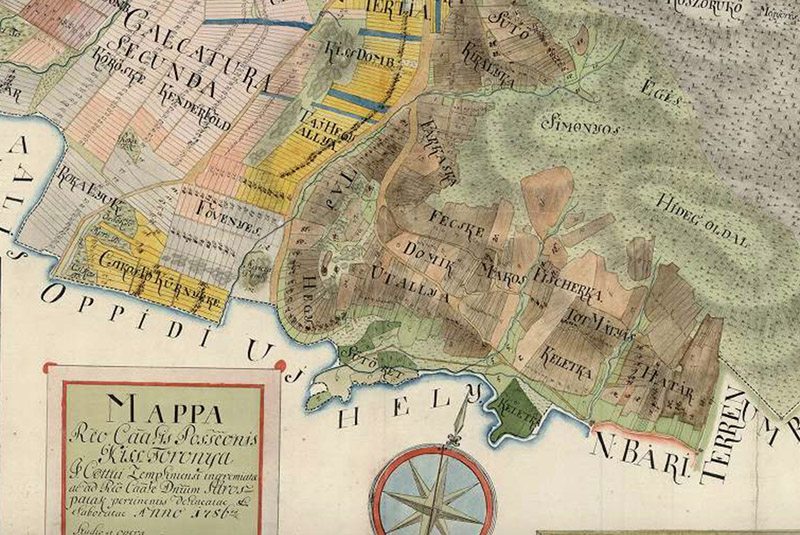
The St. Simon Hill and the vineyards (with dark brown) in 1786
Later, it was in the hands of the Lórátffy, Rákóczi and then Aspremont families; an interesting thing to note is that the noble mansion of the Rákóczi-Aspremont estates here is now the estate centre of the Barta winery in Mád! The last owners in the twentieth century were the aristocratic families of Vécsey and Windsichgrätz, just before the communist nationalisation. The greatest and best-known vineyards are still to be found here today, for example the Král’ovka, Domík or Makovisko. If we continue south, the road soon turns and a small basin with a hill in its middle, the Piliš Hill, appears in front of us. Černochov lies to the east of the hill, while at its foot the village of Bara, divided into two. Finally, the hills turn left again, that is from the east, bringing us to the village of Borša and the main east-west road connecting Slovenské Nové Mesto with Viničky.
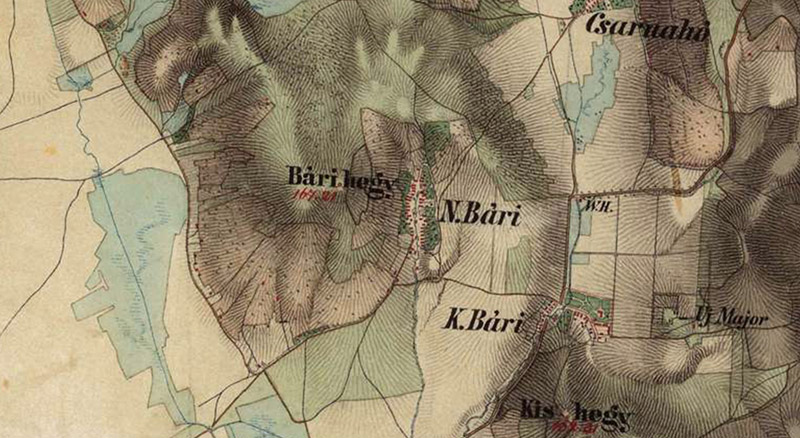
Černochov and Bara villages in 1860
Moving along the main road
Turning quickly right, or rather west, here (two minutes by car) and we reach Slovenské Nové Mesto, and then cross the imaginary border within the town into Sátoraljaújhely, which is already a Hungarian Tokaj town. Here is also worth a visit, as there is a wonderful adventure park near the town centre with a chair lift, cable cars and ski slopes in the winter. What’s more the top of the adventure park has a panoramic view of the whole Slovak Tokaj! As far as Borša is concerned, although not a wine region settlement, it’s worth strolling along to the bank of the River Bodrog and taking a look at the Renaissance Caste (also rather ruined), where the most historically important personage of the area, Ferenc Rákóczi II was born, quite by accident, on the way to one of the family’s estates.
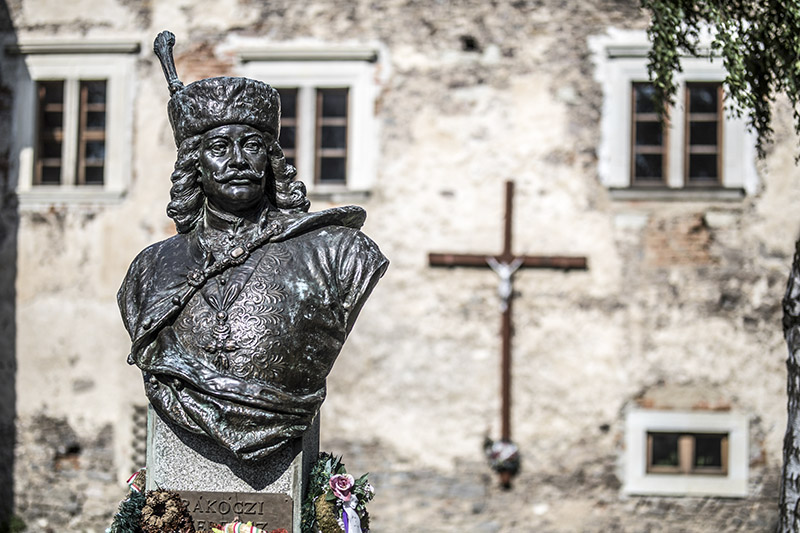
Rákóczi statue in Borša by @PixelTaster
He was the leader of the Hungarians in the war of independence against the Habsburgs, named after him. What was at stake here was how much of a role the country liberated from Turkish repression (1699), which from 1690 was again part of the independent (from 1526) Transylvanian principality, would get in the newly emerging Austrian-dominated empire. The war (1703-1711) was largely financed by Rákóczi’s income from his Tokaj estates, that is from Tokaj wine (and thus the Malá Tŕňa wines too). Next to the castle, in Zrinyi street (the street is named after Ilona Zrínyi, the mother of Ferenc Rákóczi II ), you can get the best ‘cut beer’ in the area, a special mixture of dark beer and lager. It’s definitely worth trying, even if you then get stoned by the winemakers! If, however, you turn east, that’s to say left, vineyards soon flank the road once again on your left-hand side and you arrive in Viničky. Here on your left, there are houses and the vineyards, on the right, the River Bodrog and its backwaters flank the road.
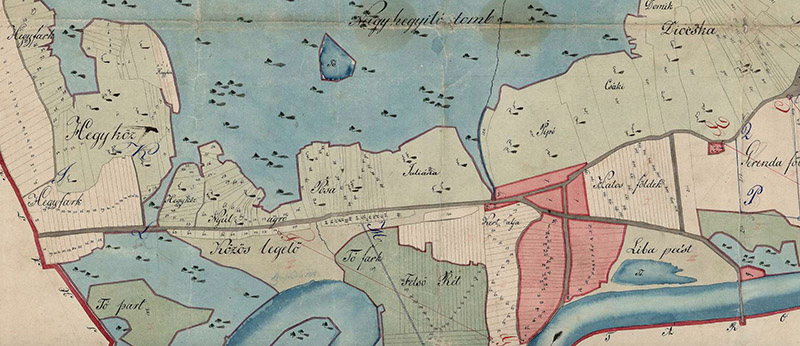
Viničky in 1857
Viničky (Szőlőske in Hungarian) has counted among the Tokaj settlements since the start of the 1900s, the Andrássy noble family had its largest vineyard here; János Mathiász, who later became one of the most famous grape breeders in Hungarian history, worked here as viticulturist. This was because he had his own winery in Mád and more than 3,700 grape varieties, mainly crossed in Kecskemét at the research institute; moreover, following phylloxera, the replanting of the Tokaj wine region with new vines was mainly thanks to him. Given that there are also Slovaks among Mathiász’s ancestors, as well as the fact that he was born on what is Slovakian territory today, perhaps it would be worth the Slovak winemakers making more use of his name, especially in Viničky!
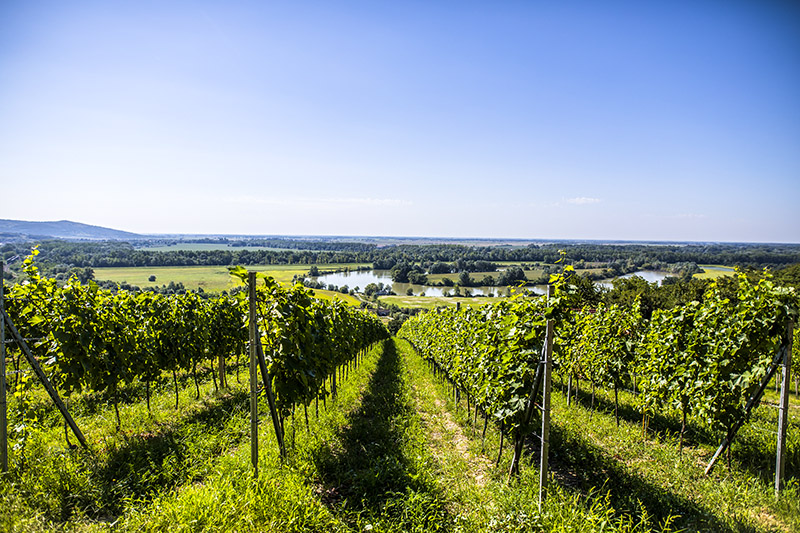
Beautiful view from a vineyard in Viničky by @PixelTaster
A bit of history
Before we go on to explore more of the sights in the surrounding area, I’ll give you a little historical summary, to clarify the Hungarian-Slovakian historical background behind Tokaj, which is something many people ask about. The Tokaj wine region became important after the Turkish occupation of the Szerémség (Srem in Serbian, Srijem in Croatian) – 1521, Nándorfehérvár, or Belgrade. Documents show that sweet wines were already being produced in Tokaj, thanks largely to the fact that in 1462, due to a Turkish foray, numerous grape-growers had already fled the age’s most famous wine region, the Szerémség, where sweet, presumably Aszú wines were made. These grape-growers mostly settled in Tokaj.
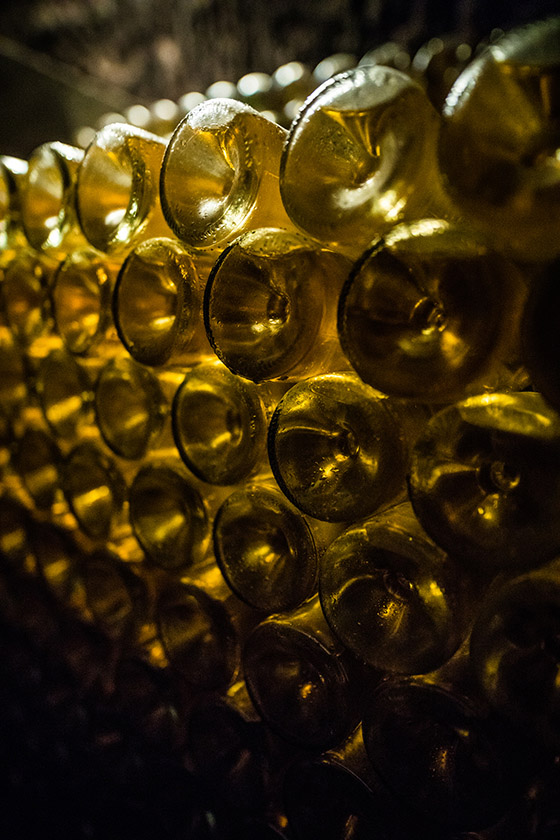
Bottles of tokajský výbers by @PixelTaster
From this point onwards, the free Royal cities of the time, such as Košice (Kassa) and Bardejov (Bárdfa), which had lived by trading wine from the Szerémség to Poland, not only began to be interested in Tokaj wine but in 1467 had already begun purchasing vineyards in the wine region! Their example was also followed in the XVI century by the towns of Prešov (Eperjes) and Levoča (Lőcse). Vintage accounts from that time, that is the second half of the XV, also report late harvests (15-20 October), which would certainly favour sweet wines. I just outlined these points, because it now makes sense to talk about the Tokaj wine region. So, from the 1400s right up to 1526 (the Battle of Mohács), Tokaj was part of the Hungarian Kingdom. Afterwards, the Hungarian Kingdom was divided into three parts, one fell under the Ottoman Turks, the second initially East-Hungarian kingdom then became a vassal state of the Turks under the name of the Transylvanian Principality whereas the third part became the Hungarian Kingdom, or royal Hungary, under Habsburg rule, who the Hungarian parliament also recognised as the legitimate Hungarian king. From this time on, the Tokaj region was part of this latter part, that is royal Hungary, until 1621, when Tokaj became part of the Transylvanian Principality until 1628. (A brief explanation: the Transylvanian Prince, Gábor Bethlen successfully intervened in the 30-year war, thus annexing seven counties to Transylvania.) And once again in 1644, thanks to new successes by the Transylvanian Prince, this time György Rákóczi I.
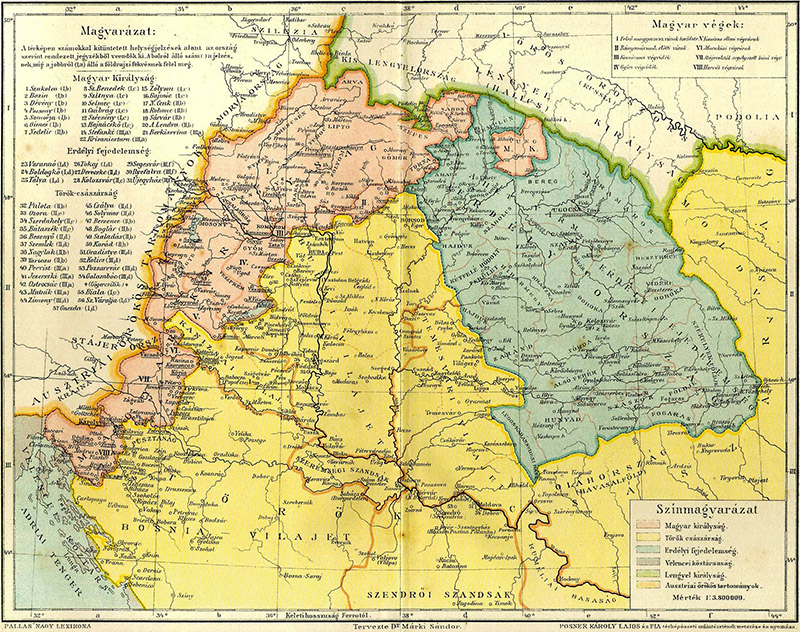
Tokaj became part of the Transylvanian Principality between 1621-28 and 1644-48, together vith Kosice
The Rákóczi family
This is not the first time the Rákóczi name has cropped up. So that you can see just how important a role they play in the history of the region and what their connection is, here is a short list of the most important members of the family. (János Rákóczi (1517-1561), Zemplén county’s sub-prefect, his son Zsigmond Rákóczi (1544-1608), Prince of Transylvania and builder of the Szerencs fortress. His son, György Rákóczi I, Prince of Transylvania, born in Szerencs in 1593. He was the “old king” who first owned the Öreg-király (means Old King) vineyard in Mád. His sons György II (1621) and Zsigmond (1622) were both born in Sárospatok and both later held the title Prince of Transylvania. György Rákóczi II’s son was Ferenc Rákóczi; what is rather interesting about him is that he died in Zboró, at the family’s old estate. The castle of Zboró is mentioned at the time as the estate of Makovicza; the memory of their ownership is more precisely preserved today in Mád with the Makovicza vineyard. His son, Ferenc Rákóczi II, who was born here, in the village of Borša, also later became Prince of Transylvania.
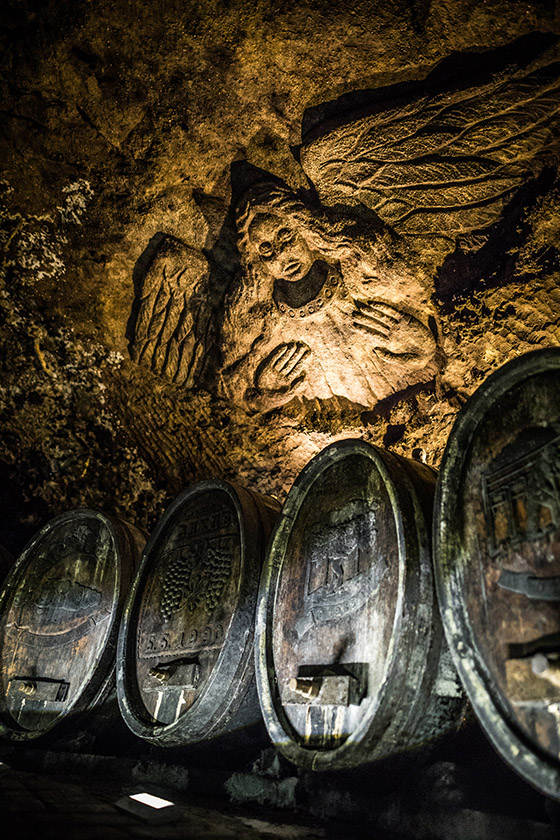
"Someone sent an angel" somewhere in a Tokaj cellar in Slovakia by @PixelTaster
After the death of György Rákóczi I (1648), the Tokaj wine region once again came under the control of the Habsburgs, i.e. part of royal Hungary until 1867, until the year of the “Compromise’, when it found itself within the territory of the Austro-Hungarian Monarchy until 1918. After the First World War, a part of it irrevocably ended up in the newly established Czechoslovakia from 1920 until 1938 when the Tokaj territories were returned to Hungary following the first Viennese decision. Then following the Second World War, the part of the wine region now under discussion ended up back in Czechoslovakia, where it remained until 1993 when the independent Slovakia was established, i.e. there has been a Slovak Tokaj since then.
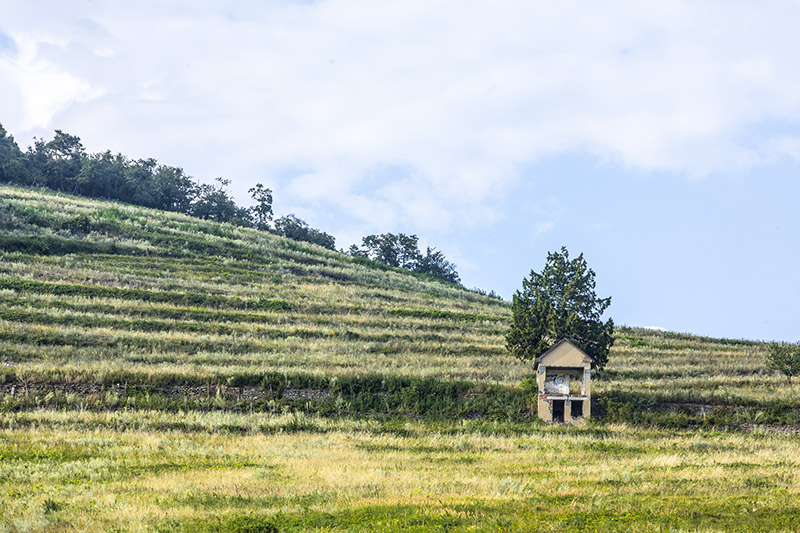
"Waiting for vines" - there are still empty fields in the best part of the Slovak Tokaj by @PixelTaster
Sights
I have already mentioned that anyone who is interested in something other than wine should visit the Sátoraljaújhely adventure park, but I would also recommend the beach there or a good paddle in a canoe along the Bodrog river. The local roads are also good for cycling as the traffic is not too heavy. You can also make a full-day excursion if you set off from Viničky (a good place to stay here is the Zlatá Putňa bed and breakfast), cross the Bodrog bridge to Streda nad Bodrogom (the former Vécsey castle building is lovely), then on to Veľký Kamenec with a beautiful view from the ruined castle; especially if you continue along the road towards Pácin (already Hungary) and turn back and admire the castle and the hill towering above it.
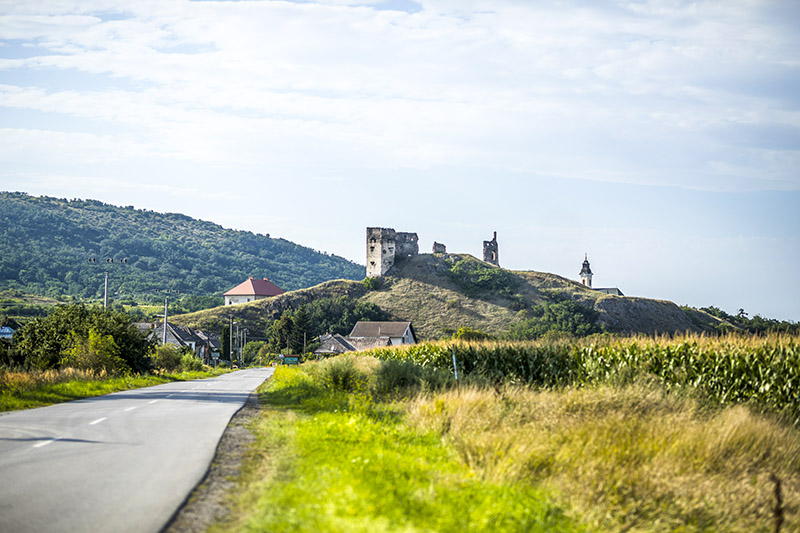
Veľký Kamenec's castle ruin by @PixelTaster
Pácin is known for its Renaissance castle (there is no border, so anyone can freely travel to it, fortunately), whilst the next village, Karcsa is known for its early medieval church. Both are worth a detour! From here you can continue via Alsóberecki (another Bodrog bridge) to Sátoraljaújhely, and from there back via Borša to Viničky. Another good tour, although, because of the traffic I’d recommend going by car, is to visit the Andrássy castle in Trebišov, where the Tokaj wines command their own place in the museum. (Only nobody was able to explain to me why they had changed the count Csáky’s nine-branch crown indicating his rank to something completely different on the family coat of arms, visible on the facade after the renovation – Count Imre Csáky constructed the castle. Anyone who knows the answer to this, will get a bottle of Tokajský výber!)
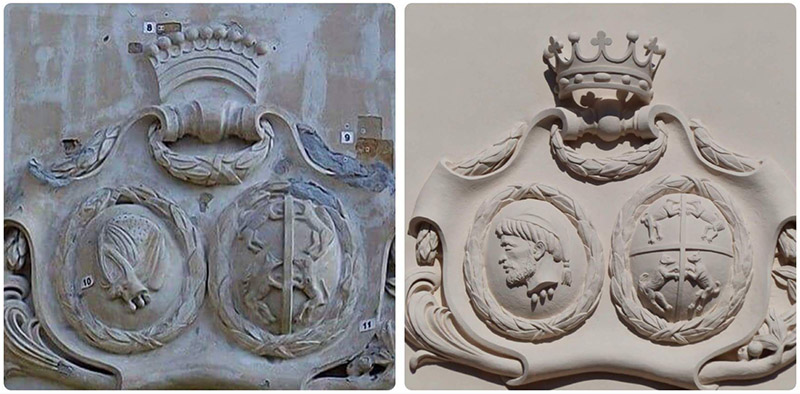
Photo by Baraonda blog
You can reach the wine region via Košice and its international airport (40 minutes away), also served from London by Wizzair. (There are plenty of places to sleep in the wine region, including the above mentioned Zlatá Putňa in Viničky, at Matús Vdovjak’s guesthouse or at the J & J Ostrožovič estate in Veľká Tŕňa, or at the Tokaj Macik bed and breakfast in Malá Tŕňa.) You’ll never get closer to the wine region than if you are in Hungarian Tokaj, so I’d advise anyone visiting there to also spend a couple of days visiting Slovak Tokaj, especially now that The Somm Journal has declared 2017 the year of Furmint in America!
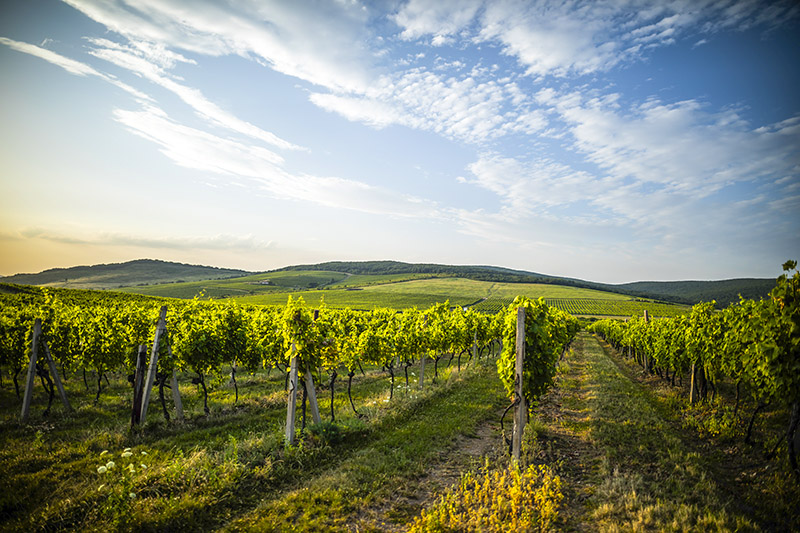
Somewhere in the vineyards by @PixelTaster
Come and taste the wine, take a look at Košice too, and if anyone would also like to bring along something to read (for some reason, this is my mania – at the end of any long article, I recommend some reading matter, as if anyone who has read to the end of this article has not read enough!), I’d heartily recommend Samko Tále’s Cemetery Book. Jaro Macik, Matús Vdovjak, Jaroslav Ostrožovič, the Zlatý strapec winery, Chateau Vecsey, Chateau Viničky, Tokaj&CO and Chateau Grand Bari are all awaiting you too!



